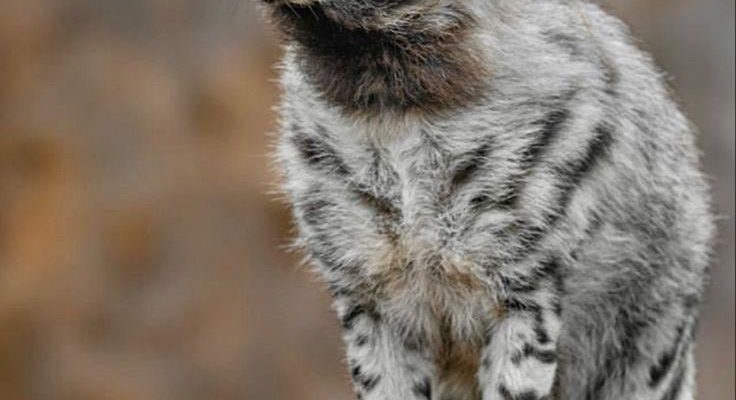![Comparing The Striped Hyena Vs. [Similar Species]](https://gudri.com/wp-content/uploads/2025/06/Comparing_The_Striped_Hyena_Vs___Similar_Species__image_0.jpg)
Think of them like two siblings who share some traits but express their personalities in very different ways. The striped hyena is the quieter, more reserved one, while the spotted hyena is bold and boisterous. Understanding how these two species differ not only teaches us about hyenas but also sparks our curiosity about the animal kingdom as a whole.
So, if you’re wondering what sets these fascinating hyenas apart, let’s dive in!
Physical Characteristics: Stripes vs. Spots
When you first glance at a hyena, you might notice the unique markings on their fur. The striped hyena has, as the name suggests, noticeable stripes running down its body. These stripes are dark and contrast sharply with its lighter fur, giving it a distinct appearance. On average, striped hyenas are a bit smaller than their spotted cousins, weighing between 50 to 90 pounds.
In contrast, the spotted hyena is larger and has a more robust build. Instead of stripes, it boasts an array of spots that blend seamlessly into its tawny coat. These spots serve a purpose—they help them blend into their environment, making it easier to stalk prey. Spotted hyenas can weigh anywhere from 90 to 190 pounds, making them one of the largest hyena species.
Key Differences:
- Striped hyenas are smaller with distinct stripes.
- Spotted hyenas are larger and have a spotted coat.
Habitat and Range: Where They Call Home
Both striped and spotted hyenas inhabit the African continent, but their ranges and preferred habitats differ. Striped hyenas are more versatile; they can be found in a variety of environments, from savannas to mountainous regions and even deserts. Their adaptability allows them to thrive in areas with less food availability.
On the flip side, spotted hyenas primarily occupy open grasslands and savannas. They prefer areas with abundant prey, like wildebeests and zebras. These habitats provide the social structure they thrive in. Spotted hyenas are often found in large clans, which can include up to 90 individuals, while striped hyenas tend to roam alone or in smaller groups.
Home Sweet Home:
- Striped hyenas adapt to diverse habitats.
- Spotted hyenas prefer open grasslands with plenty of prey.
Diet and Hunting Behavior: Scavengers vs. Predators
Now, let’s talk about what these two hyenas eat. The striped hyena is primarily a scavenger, feeding on carcasses left behind by larger predators. Their diet includes rodents, insects, and fruit, making them opportunistic feeders. They often scavenge at night, using their strong sense of smell to locate food.
In contrast, spotted hyenas are formidable hunters. While they do scavenge, they typically hunt in groups, which allows them to take down larger prey. Their hunting method is strategic, often involving teamwork to encircle and exhaust their targets. This cooperative behavior highlights their advanced social structure and intelligence.
Dinner Time:
- Striped hyenas mostly scavenge and are opportunistic eaters.
- Spotted hyenas are skilled hunters and work in groups.
Social Structure: Lonely Wanderers vs. Social Clans
Social behavior is a major point of difference between these two hyenas. Striped hyenas are more solitary creatures. They tend to be shy and avoid large groups, which means you might often find them alone on their nightly scavenging trips. They communicate through vocalizations, but their social interactions are limited.
On the other hand, spotted hyenas are highly social animals. They live in clans led by females, which is a fascinating aspect of their social structure. Female spotted hyenas are dominant, sometimes leading to interesting social dynamics within the group. They use a range of vocalizations, including whoops and cackles, to communicate with one another, especially when coordinating hunts.
Social Lives:
- Striped hyenas are solitary and avoid large groups.
- Spotted hyenas live in clans led by dominant females.
Conservation Status: Challenges and Threats
Both species face various challenges in the wild, but their conservation statuses differ. The striped hyena is classified as Near Threatened by the IUCN due to habitat loss and hunting pressures. Their adaptability has helped them survive in fragmented habitats, but they still face significant threats from humans.
In contrast, spotted hyenas are more resilient in population numbers, often considered Least Concern. Their adaptability to different environments and ability to hunt in groups contribute to their survival. However, they still face threats from habitat destruction and conflicts with humans, especially in areas where livestock are present.
Conservation Matters:
- Striped hyenas are Near Threatened, facing habitat loss.
- Spotted hyenas are more resilient but still face human threats.
Cultural Significance: Myths and Misunderstandings
Hyenas, especially in folklore and popular culture, are often misunderstood. The striped hyena is sometimes seen as a symbol of misfortune or trickery in various cultures. Their reputation might stem from their scavenging habits and nocturnal nature, leading to negative perceptions.
Similarly, spotted hyenas have been featured in stories and movies, often depicted as cunning or villainous characters. However, these portrayals don’t do justice to their intelligence and complex social structures. Understanding their true nature can help shift these misconceptions and promote greater awareness of their ecological roles.
Cultural Reflections:
- Striped hyenas symbolize misfortune in some cultures.
- Spotted hyenas are often misrepresented in media.
In comparing the striped hyena and the spotted hyena, we uncover a wealth of differences, from physical traits to social behaviors and diets. Each species brings its unique flavor to the ecosystem, showcasing nature’s incredible diversity. By diving into their worlds, we not only learn about hyenas but also about the delicate balance of life in the wild.
Next time you hear a hyena’s whoop in the distance, remember these fascinating facts. Whether it’s the solitary striped hyena or the social spotted hyena, both play crucial roles in their habitats. Understanding and appreciating these creatures can inspire us to protect their existence and the environments they inhabit. After all, every animal has a story worth telling!

